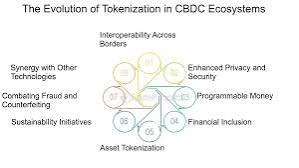IT IS YOUR MONEY
Central Bank Digital Currencies Explained
Central Bank Digital Currencies (CBDCs) are digital versions of national fiat money issued by central banks. Designed for secure, efficient payments, CBDCs aim to modernize monetary systems and enhance financial inclusion. Over 130 countries are exploring or piloting CBDCs, including China’s digital yuan and the ECB’s digital euro. This innovation could reshape how we use money.

What Is a CBDC?
A Central Bank Digital Currency (CBDC) is a legal tender issued in digital form by a nation’s central bank. Unlike cryptocurrencies, CBDCs are centralized, regulated, and backed by the full faith of the government. They exist alongside cash and bank deposits but operate on digital infrastructure—often blockchain or distributed ledger technology.
CBDCs come in two forms:
Retail CBDCs: Available to the public for everyday payments.
Wholesale CBDCs: Used by financial institutions for interbank settlements.
They are designed to be safe, efficient, and inclusive—offering the benefits of digital payments without the volatility of private cryptocurrencies.
Global Pilots and Real-World Deployment
China leads in CBDC adoption with its digital yuan (e-CNY), used by over 300 million people across 26 cities. It’s accepted in retail stores, public transit, and even cross-border trade with Hong Kong and the UAE.
The European Central Bank is in the final testing phase of the digital euro, focusing on privacy, security, and offline functionality. Pilot programs in France and Germany are testing use cases in retail and government disbursements.
In the United States, the Federal Reserve is conducting research through the FedNow instant payment system, laying groundwork for a potential digital dollar. Meanwhile, Nigeria’s eNaira and Jamaica’s JAM-DEX are live retail CBDCs aimed at boosting financial inclusion in underserved communities.
Benefits: Efficiency, Inclusion, and Monetary Policy
CBDCs reduce reliance on cash and legacy payment systems, cutting transaction costs and settlement times. Governments can disburse welfare or stimulus payments instantly and transparently.
They also promote financial inclusion. In rural or unbanked regions, citizens can access digital money via mobile phones without needing a traditional bank account.
For central banks, CBDCs offer better control over monetary policy. They can implement targeted stimulus or programmable money—e.g., funds that expire if not spent within a certain period to boost economic activity.
Privacy and Implementation Challenges
Privacy remains a major concern. While CBDCs can offer anonymity for small transactions, central banks may have oversight for anti-money laundering purposes. Striking the right balance is critical to public trust.
Technical challenges include scalability, cybersecurity, and interoperability with existing banking systems. Additionally, CBDCs must not destabilize commercial banks by drawing deposits away from the traditional system.
As digital money becomes inevitable, CBDCs represent a sovereign response to the rise of private digital currencies. They aim to preserve monetary stability while embracing innovation.
The future of money is digital, and central banks are ensuring it remains trusted, inclusive, and aligned with national interests.
To understand how CBDCs may impact your financial life and business operations, visit DigitalAssets.Foundation and speak with experts an initial FREE consultation.

More News
© 2025
